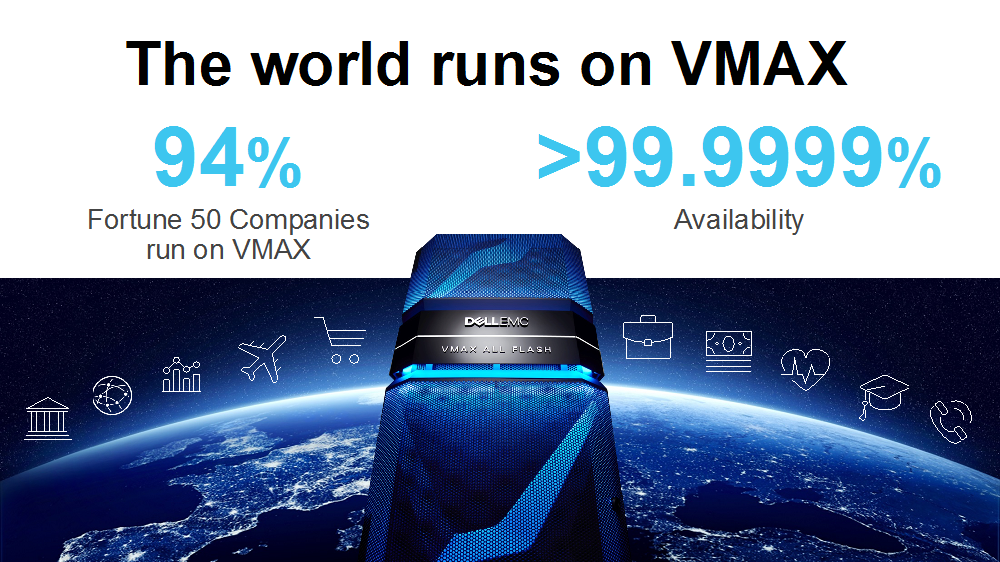Today, Dell expanded its high-end storage offerings with the new VMAX 950F All Flash storage array as well as new release of HYPERMAX software. VMAX 950F is the latest Dell premier enterprise storage offering, which has set the industry’s benchmark for enterprise storage arrays for decades.

A brief look at the numbers reveals just how far we have come in the enterprise storage arena. VMAX 950F peak performance delivers up to 6.7M IOPS – 68 percent faster than the previous generation – and 150GB/s of sustained bandwidth[i], ideal for mixed workloads involving transactional workloads as well as data warehouse applications. VMAX 950F response times are equally impressive sustaining 350 microseconds for OLTP databases – 30 percent better response times than the previous generation[ii]. Most importantly, the 950F offers best-in-class performance, which is up to 4x faster than the nearest competitor in the real world (for OLTP while leveraging compression technologies).[iii]

This new flagship VMAX All Flash is the ultimate platform to consolidate with confidence – offering a 25 percent smaller footprint for the same performance as its predecessor. The 950F also now supports mixing mainframe and open systems and a new, smaller 13TB entry point for mainframe customers. This combined with the massive performance and scale as well as mission critical availability – make the 950F the ideal platform for consolidating enterprise workloads.

We are also announcing many exciting VMAX All Flash software enhancements including the latest version of HYPERMAX, providing greater levels of security, availability and data protection. Highlights of the latest VMAX software enhancements include:
- RecoverPoint support – VMAX customers can now utilize Dell RecoverPoint 5.1 to heterogeneously replicate to/from Dell storage arrays (including VMAX All Flash, XtremIO, UNITY, VMAX3, VMAX2, VMAX1 and VNX) for flexible disaster recovery.
- Secure snapshots – prevent accidental or malicious deletion of SnapVX snapshots to protect against both internal and external threats.
- Data-At-Rest Encryption (D@RE) external key manager – integration with external key managers enables customers to leverage a centralized key management platform for all cryptographic keys and applications including D@RE. Gemalto SafeNet KeySecure and IBM Secure Key Lifecycle Manager are supported in this HYPERMAX release.
- Non-Disruptive Migration (NDM) with SRDF/S – migrate with confidence by maintaining synchronous replication on the source array while migrating to VMAX All Flash – all without disrupting the host.

With continued innovation, combined with rapid customer adoption, Dell is leading the way to modernize datacenter infrastructure with VMAX All Flash.
Want to learn more?
Check out the VMAX All Flash on EMC.com, including the . Don’t forget to follow @DellStorage on Twitter for the latest and greatest on VMAX All Flash.
Visit Dell.com/All-Flash for more information on Dell’s All-Flash portfolio.
[i] Based on Dell internal testing compared to VMAX 850F, March 2017. Actual performance may vary.
[ii] Based on Dell internal testing compared to VMAX 850F, March 2017. Actual performance may vary.
[iii] March 2017 Dell internal testing compared to competitive array for OLTP with compression and encryption.